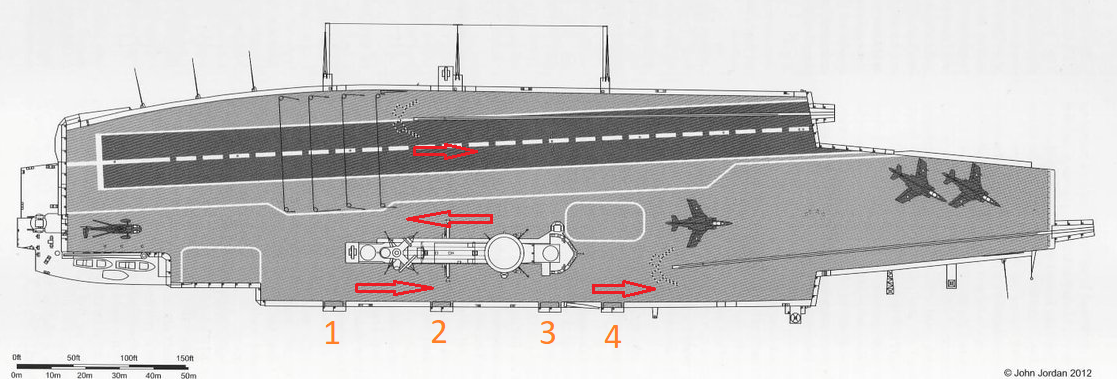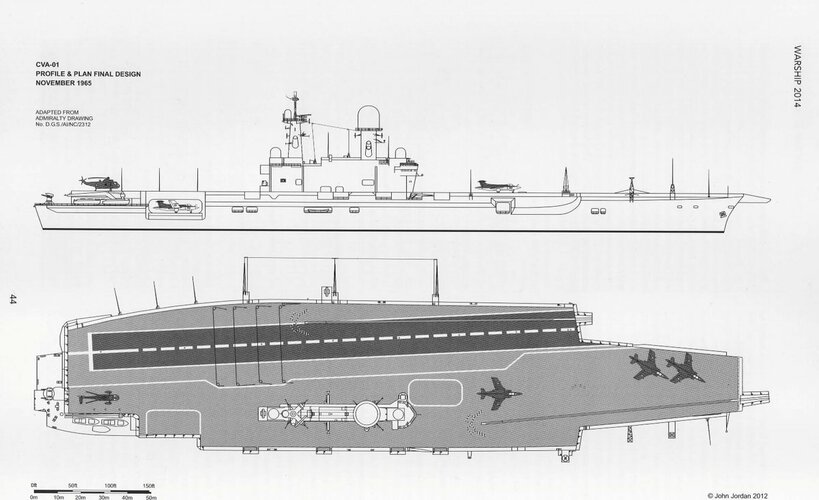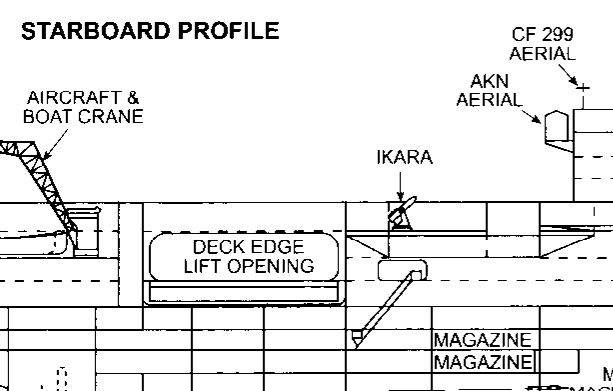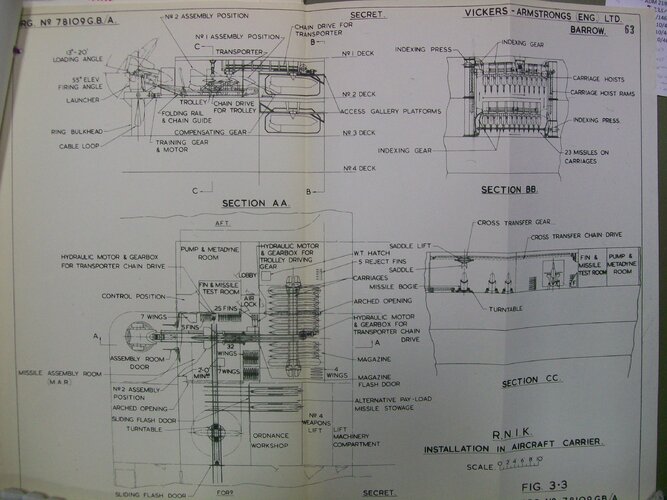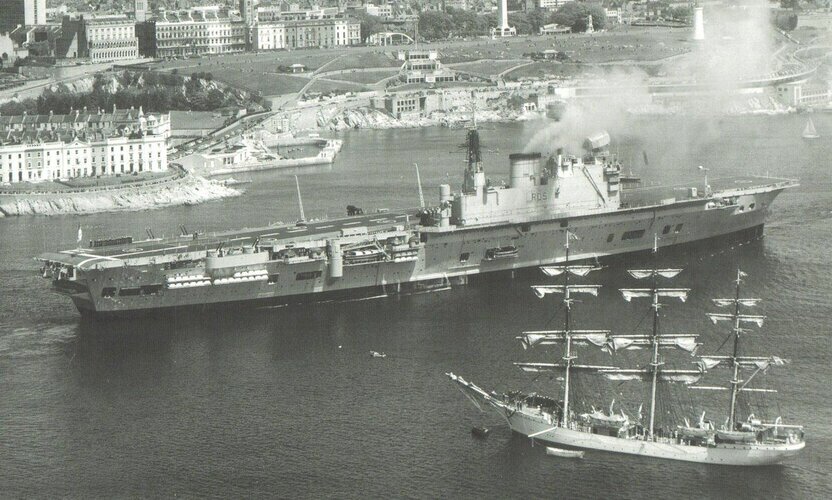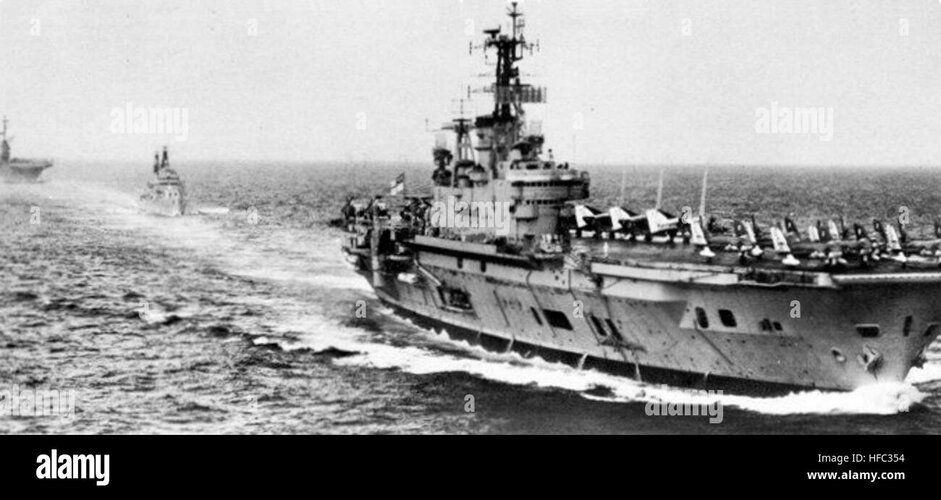Just dug out a couple of tables from Friedman on sizes and costs:
1960 Alternatives
1-42,000 tons, 31 aircraft, 770x165ft flight deck, 2 cats, Sea Cat, £44M
2-48,000 tons, 41 aircraft, 820x165ft flight deck, 2 cats, 3 Tartar, £54M
48,000 tons, 43 aircraft, 820x200ft flight deck, 2 cats, 3 Tartar, £54M
50,000 tons, 44 aircraft, 860x165ft flight deck, 2 cats, 3-4 Tartar, £55M
55,000 tons, 34 aircraft, 870x200ft flight deck, 3 cats, 4 Tartar, £59M
68,000 tons, 59 aircraft (+4 ASW heli), 1004x190ft flight deck, 3 cats, 4 Tartar, £67M
1962 Alternatives
50,000 tons, 36 aircraft inc. heli (36 interim Vix & Bucc), 890x177ft, 2 cats (200 & 250ft), 1 Sea Dart & 1 Ikara, £50-60M
52,000 tons, 39 aircraft inc. heli (36 interim Vix & Bucc), 900x177ft, 2 cats (200 & 225ft), 1 Sea Dart & 1 Ikara, £50-60M
53,000 tons, 40 aircraft inc. heli (36 interim Vix & Bucc), 920x180ft, 2 cats (250ft), 1 Sea Dart & 1 Ikara, £50-60M
55,000 tons, 40 aircraft inc. heli (36 interim Vix & Bucc), 940x180ft, 2 cats (250ft), 1 Sea Dart & 1 Ikara, £58-63M
58,000 tons, 46 aircraft inc. heli (48 interim Vix & Bucc), 970x190ft, 2 cats (250ft), 1 Sea Dart & 1 Ikara, £60-65M

